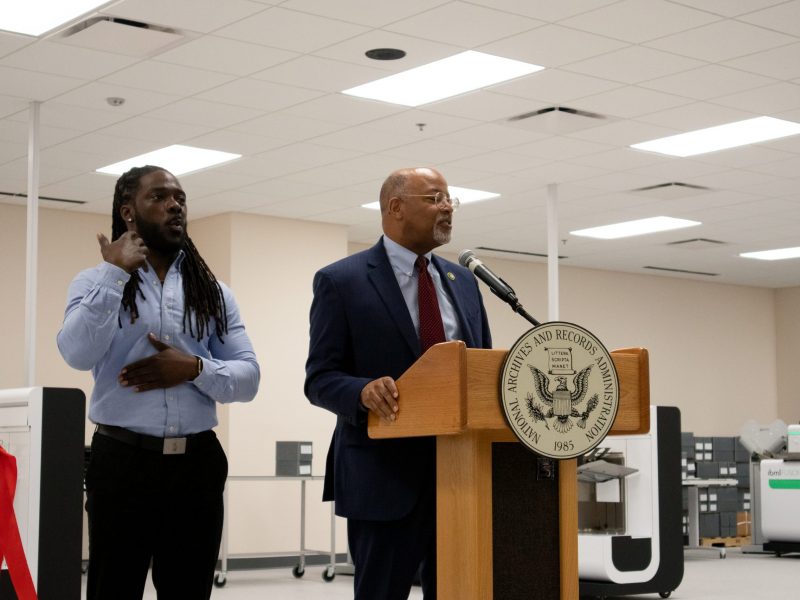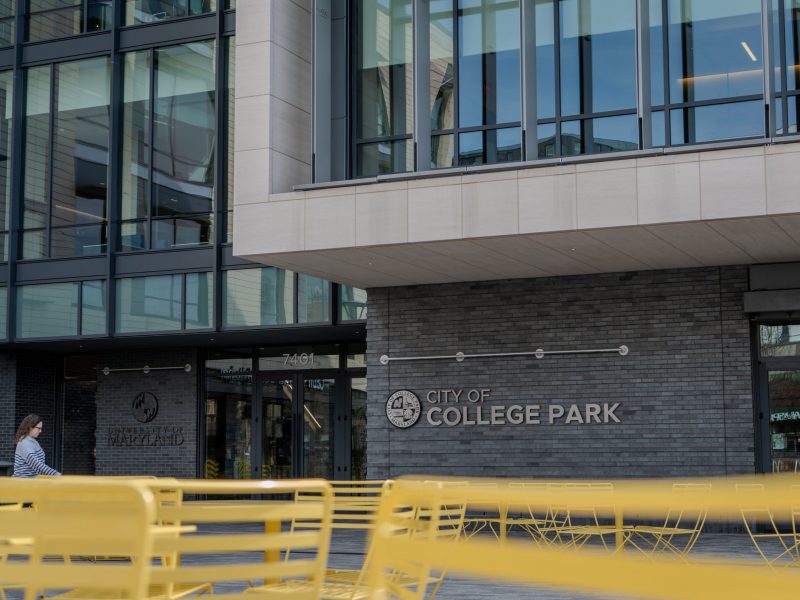Tensions were high during Tuesday night’s College Park City Council meeting, as council members and residents expressed frustrations with ongoing “tree trimming” near the College Park Airport.
Despite starting the process earlier this month, zero trees have been pruned to date, said airport manager Lee Sommer, who spoke during Tuesday’s meeting.
Instead, over 250 trees have been removed. Officials tasked with pruning the trees were concerned doing so would kill them, and if they died in their current spots, the dead trees would rot and fall, causing potential hazards. The officials didn’t return to the city council to ask about removing the trees altogether, so the city requested they attend Tuesday’s meeting to explain what happened.
Six audience members spoke up about the issue during Tuesday’s meeting, with most expressing opposition. Those in favor of the removal, though, praised it as an effort to increase safety for pilots flying out of the airport.
On the other side, though, one resident referred to the measures as a “slaughter” of the tree canopy.
Jan van Zutphen, a city resident who spoke at the meeting, said he has been shocked by the project’s outcome so far, and he doesn’t think the public was provided adequate information about its scope.
“College Park Airport Tree Trimming is a misleading title — it actually should be called the College Park Airport Tree Removal Project,” van Zutphen said. “When I saw what had happened, to me it looked extreme, and I really question if it was necessary.”
[Read more: College Park officials may introduce restrictions on tree cutting for property owners]
When the city spoke with airport officials three weeks ago, District 1 Councilman Fazlul Kabir said council members were told that just around 150 trees would be trimmed. But during a presentation on the project Tuesday, given by officials from the airport and representatives of Maryland-National Capital Park and Planning Commission — the office assisting with the project — predictions said more than 400 trees could be trimmed or removed.
The information previously provided to the council wasn’t transparent, Kabir said, and the lack of communication has made residents angry.
“The community has been misled,” Kabir said. “This is not rocket science. If you knew that there were 400 trees that would be gone, it’s not a matter of interpretation.”
The trimming project, which began earlier this month, has targeted both sides of the airport: near the Calvert Road Park Disc Golf course to the east and near the College Park Metro to the west.
Approximately 150 trees have been removed from the area near the Disc Golf course, and 114 have been removed near the Metro, Sommer said. If the project continues, another 282 could be removed, he said.
That could pose a huge problem for habitat loss and stormwater management in the city, said District 3 Councilman John Rigg.
To take on the project without considering the effects it could pose to runoff and surrounding ecosystems was “infuriating,” Rigg said — especially because, he insisted, the agency had numerous resources it could have used to gather information.
“You’re a sophisticated bicounty agency,” Rigg said, slapping the table in front of him in frustration. “To come here without having done your homework, and having been three weeks away from presenting information that’s misleading at best and deceptive [at] worst, I find galling.”
Echoes of “Amen” from audience members followed Rigg’s speech.
However, Sommer said the project is meant to to bolster safety measures around the airport, as tree canopies can pose a threat to pilots landing at the airport. And, he said, the airport plans to replant the trees it removes with ones that will not obstruct the paths of incoming planes.
[Read more: Construction at UMD is displacing trees, but more will be replanted]
Michael Cummins, who is president of the Free State Flying Club— which is based in College Park — spoke in favor of the airport’s actions, saying tree trimming is routine for most airports.
“With our pilots, they don’t want to be flying into College Park Airport at night,” Cummins said, “and then all of a sudden see tree branches in their windshield.”
District 2 Councilman P.J. Brennan said the potential re-planting of trees in the future wasn’t enough to justify the present removal of the canopy.
Trees take decades to grow, and Brennan was concerned that if the agency plans to replace the removed trees with types that don’t grow as tall, there is no guarantee that the canopy will ever fully be restored.
Mayor Patrick Wojahn echoed Brennan’s remarks. He said he was shocked to learn how many trees had been removed, and the impact the project was having on the community.
Still, he pointed out that the airport — as well as the tree canopy — means a lot to College Park.
“At this point, these are two issues that are of important values for the city that are in conflict,” Wojahn said.
Moving forward, a representative from Maryland-National Capital Park and Planning Commission said she would regroup with her colleagues to pull together a timeline for the trimming, and report back to the council.
The result was an attempt to restore communication between the city and the agencies supporting the tree removal — a goal that caused District 1 Councilwoman Kate Kennedy some hesitation.
“I’ve not felt good about building that trust tonight again,” Kennedy said, adding that in the future she hopes information presented to the council will be clear and accurate. “I’m just hoping that there can be a holistic conversation.”
This story has been updated.



